This page details how I came up names for stunts. This page will address why I decided to come up with these names and the system behind them. If you don't care about the names I use for stunts this page is not for you.
On the way to creating UST I felt compelled to come up with names for the stunts I found that did not have them. In Halo PC stunting there are a great many stunts that don't have names that have to be described to other stunters in order to be understood. I have always thought this to be silly, and have thus attempted to make an intuitive set of names which draws from biological classification to form something of a taxonomy - a naming system. Many stunters in Halo use at least some of these names today, and while some may seem strange on first look, I think you'll find they serve their purpose well. This may seem like overkill, but once you understand the huge volume of stunts in Halo 1, as is presented by this video, it should make sense to have such a carefully built system.
I should note, however, that this system is not perfect. There are situations in which, I feel, the templates provided don't provide adequately descriptive/intuitive names. In these cases I resorted to a nickname + specific name format. There are also certain stunts that are so well known by their nicknames, I refrained from providing a name generated by my system.
I. Binomial Nomenclature
Like biological classification I have adopted a sort of "Binomial Nomenclature". That is to say, every stunt name is usually built from two parts: a general name and a specific name.
The general name comes first, here is an example:
Hog Balance on Big Pillar
If there is only one way to balance a hog on the big pillar, this would be the name associated with that one stunt. However, if there are more ways then one to balance a hog on a big pillar, those ways would have to be noted so people could know which you were talking about. This leads to the second part of the name, the specific name which is placed in parenthesis.
The specific names for the general category presented above would lead to the following names:
Hog Balance on Big Pillar (Back)
Hog Balance on Big Pillar (RSU A)
Hog Balance on Big Pillar (RSU B)
Hog Balance on Big Pillar (Side)
Hog Balance on Big Pillar (UD A)
Hog Balance on Big Pillar (UD B)
Each of these 6 names represents an individual stunt. They are all hogs balancing on big pillars, but each one is on a different balance point. The balance point is noted in the parenthetical section of the name, and is the "specific" part of the name. All names follow this format:
General Name (Specific Name)
Just as a reminder, specific names are not always necessary. Sometimes a general name alone will suffice in describing a unique stunt. In these cases the specific section is omitted.
II. Naming Base Stunts
Base stunts have one of the most intuitive naming schemes. All one has to do to name a base stunt is ask a series of questions that allow for the construction of a descriptive name.
Let's say we have the following stunt:

The first thing we can observe about this stunt is it involves a Hog. This becomes the first part of the name: the stunt is a "Hog __ __".
We can then observe that the Hog is balancing, thus the stunt is a Balance. This becomes the second part of the name: the stunt is a "Hog Balance __ __".
We can then observe that this Hog is balancing on a particular part of the base. It's not on the small pillar or the portal:
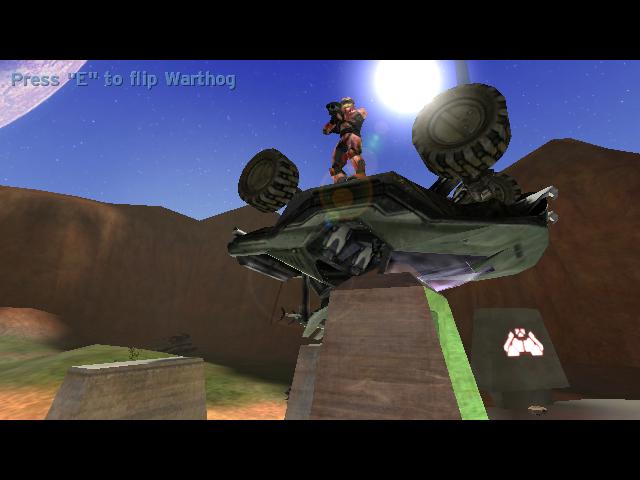
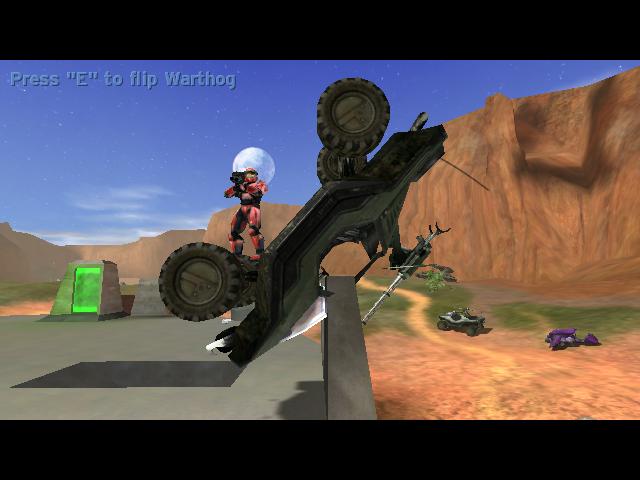
It's on the big pillar. This becomes the third part of the name: the stunt is a "Hog Balance on Big Pillar".
Finally, we can observe that there are several ways we can balance a Hog on a Big Pillar. We could balance it on the pillar upside-down, right side up, facing the base, facing away from the base, on its back, on its gun, etc.
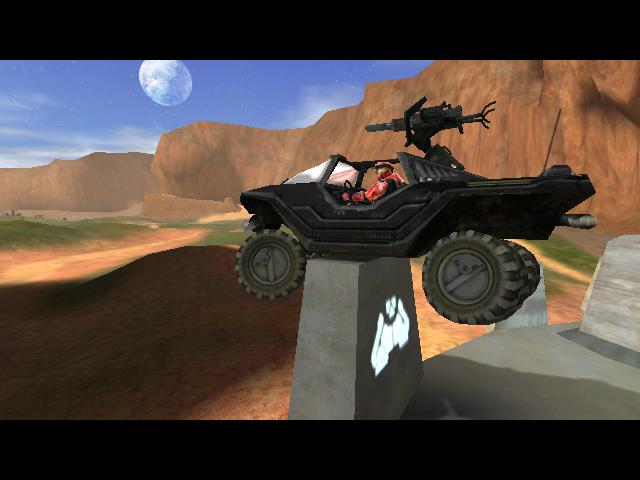

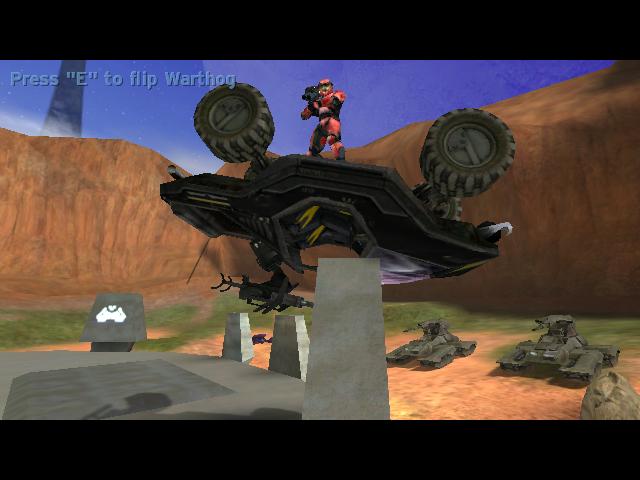
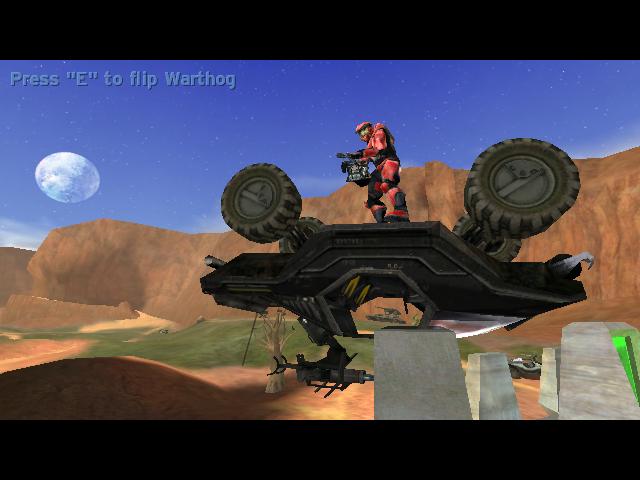
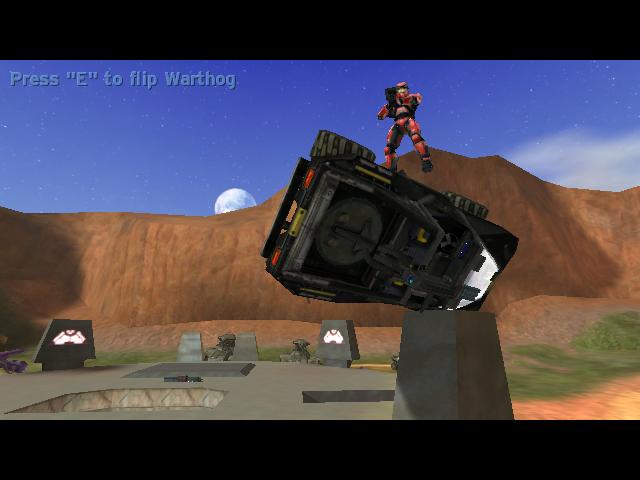
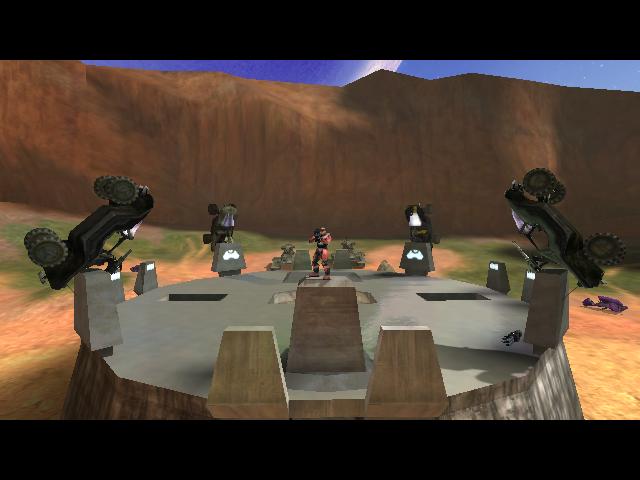
This leads to the final part of the name, the specific part. Thus for this stunt we have the name:
"Hog Balance on Big Pillar (UD A)"
This can be applied equally well to any vehicle balance on any part of the base by any balance point (with a few exceptions in which nicknames are used) through the following template-
"[Vehicle] Balance on [Object] ([Balance Point])"
A list of Balance points can be found in the terminology section.
This can be similarly extended to insides through three simple replacements-
Replace "Balance on" with "in"
Replace [Object] with [Geometry]
Replace [Balance Point] with [Break Point + state]
Thus we have the following template-
"[Vehicle] in [Geometry] ([Break Point + state])"
The [vehicle] section is identical in definition as it is with balances: it's just the name of the vehicle involved.
The [geometry] section is defined as the object/area the vehicle intersects. E.g. the Portal, the Small Pillar, the Big Pillar, etc. This section is over-ridden in certain situations when an object/area cannot be adequately described in an intuitive and clear fashion. This is often the case when the vehicle is inside of an area rather than object (e.g. the ceiling of the base, or the overhanging "slabs" found above the ramps).
The [break point + state] section is defined as both the way in which the vehicle clips/intersects with the object and the state the vehicle is in (is it upside down, right side up, balanced?). E.g. we can have:
"Ghost in Portal (Seat + Wing)"
"Ghost in Portal (Seat + Wing UD)"
and
"Ghost in Portal (Seat + Wing Balance)"
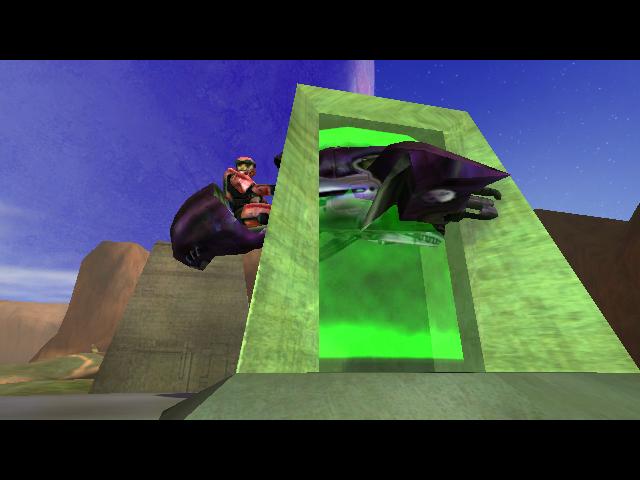
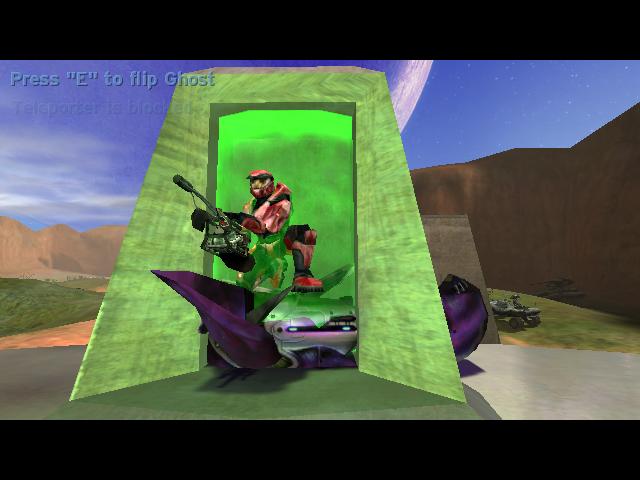

These are all Ghosts inside of the portal by the same two break points (the seat and the wing), however they have been adjusted through nontrivial methods to be in the portal in different states: right side up, upside down, and vertical (balanced).
You can find a list of break points in the terminology section.
III. Naming Balances
Balances are split into the two sub-types: "Floor Balances" and "Object Balances". Object balances are named in the same fashion as base stunt balances by the template "[Vehicle] Balance on [Object] ([Balance Point])". Below are some example names of object balances-
Hog Balance on Big Rock (Middle)
Hog Balance on Small Rock (Gun)
Hog Balance on Small Rock (Middle)
Hog Balance on Tree

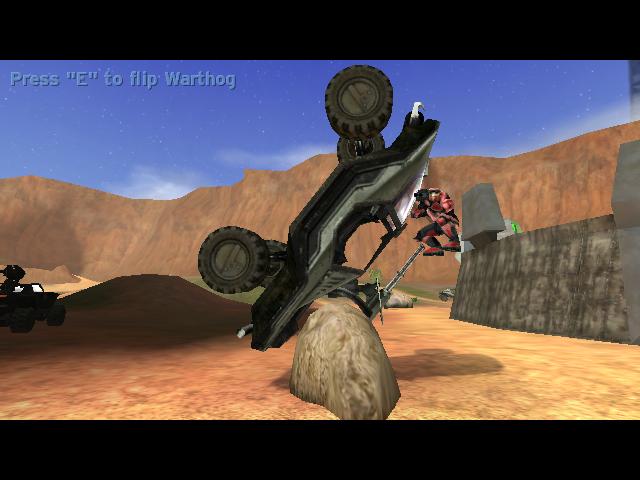

These are all of the same form as the naming for balances on the base. The only notable item in this listing is a balance that lacks a specific name due to there being only one permutation (one balance point) for the vehicle balancing on that particular object. In this case you can only balance a Hog on a tree in one way. If at a later date an additional way was discovered this name would have to be modified to include a specific name.
Floor balances are a different story. Because they aren't specific to an object or area, one can simplify their name by removing the "[Object]" field. This leaves "[Vehicle] Balance ([Balance Point])". We could use this sort of name for floor balances, but one might recognise that it is awfully similar to the format for Object Balances, and thus might be confusing. This leads to a slightly altered naming structure of the form "[Vehicle] [Balance Point] Balance". Below are some example names of floor balances-
Hog Nose Balance
Ghost Nose Balance
Tank Back Balance

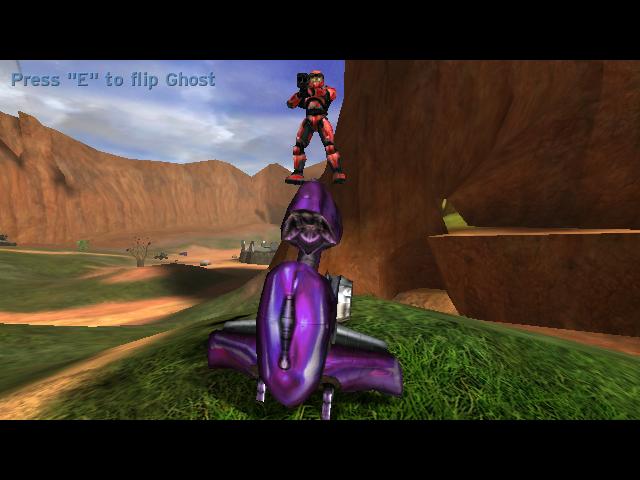
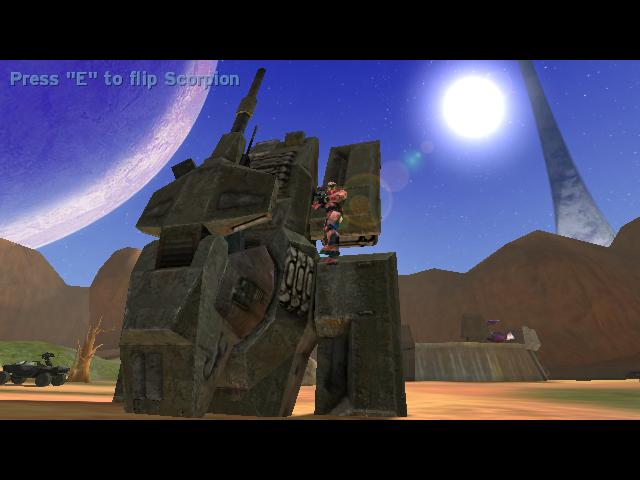
You can find a list of balance points in the terminology section.
IV. Naming Insides
Insides are split into two sub-types: "Actor/Player Insides" and "Vehicle Insides". Actor/player involve getting a player, or other actor if you're playing campaign, inside of an enclosed object. This object could be a rock, a tree, a pillar, or a vehicle. Below are some example names of Actor/player insides-
Inside Tank Back Balance (Top Tread)
Inside Hog (Hood)
Inside Small Pillar
Inside Rock (Noob Rock)
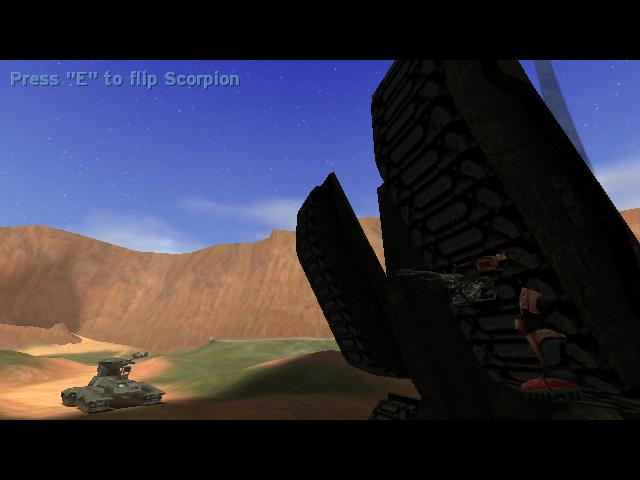
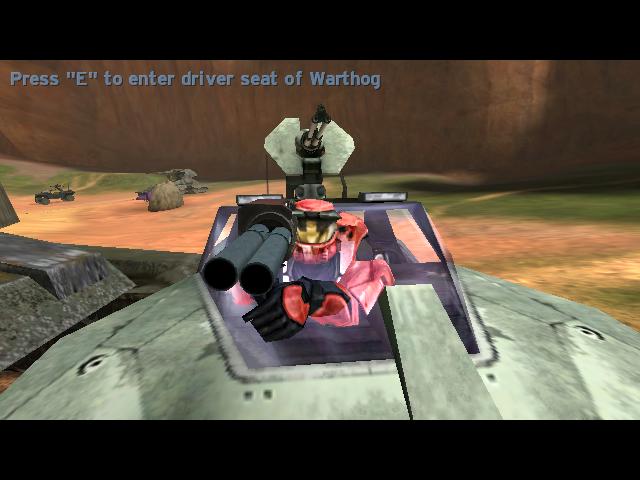

This format is realized by noting you are getting yourself inside of an object (or in some cases, objects), sometimes in a particular area of that object. Thus we derive the template-
"Inside [Object/s] ([Area])"
In some cases the "[Area]" field is replaced by a "[Specific Object]" field. This usually occurs with insides that are very similar (like getting inside various rocks or trees). This gives the following template which is usually only seen with rock/tree insides:
"Inside [Object/s] ([Specific Object])"
Vehicle insides are named in a format identical to the one used for vehicle inside base stunts, as presented below:
"[Vehicle] inside [Object] ([Break point + state])"
Here are some example names of vehicle insides:
Ghost Froom (Red Base)
Tank in Tree
Ghost in Rock
Ghost in Tree (Blue Base Tree)


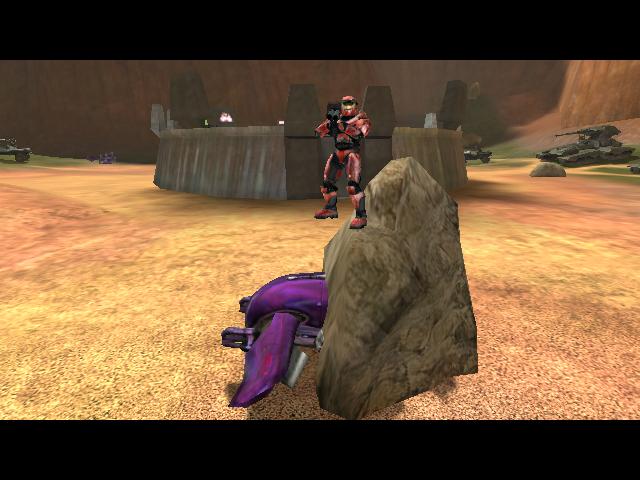
There aren't very many vehicle inside that aren't around a base on Blood Gulch, and some of the ones that are were improperly categorized at the time when I was making the movie into base stunts (Full Ghost Sharks and Full Ghost Shrooms).
V. Naming Ledges
Below I will give examples of the names assigned to ledges and an explanation as to how and why I name ledges in this way. To start I will give some examples of general names.
Ledge Between the Caves
Blue Cave Ledge
Ledge Behind Blue Base
In the first two names on this list above we have sequences of ledges you can follow in a wall/ceiling which can all be started from the same location/bump, but which all end in different places. These ledges have been grouped into general names based on the starting point. In the third case we have a handful of ledges which take place behind blue base with slightly different starting points. These ledges have all been grouped into one general name because they all start from the same general area. On smaller maps where telebumping or shield bumping is necessary to get outside of the map's geometry most ledges are given unique names based on the ending point reached, rather than being given general names based on their starting point.
Blue Cave Ledge (Blue Side)
Blue Cave Ledge (Arch)
Blue Cave Ledge (Red High)
Blue Cave Ledge (Red Low)


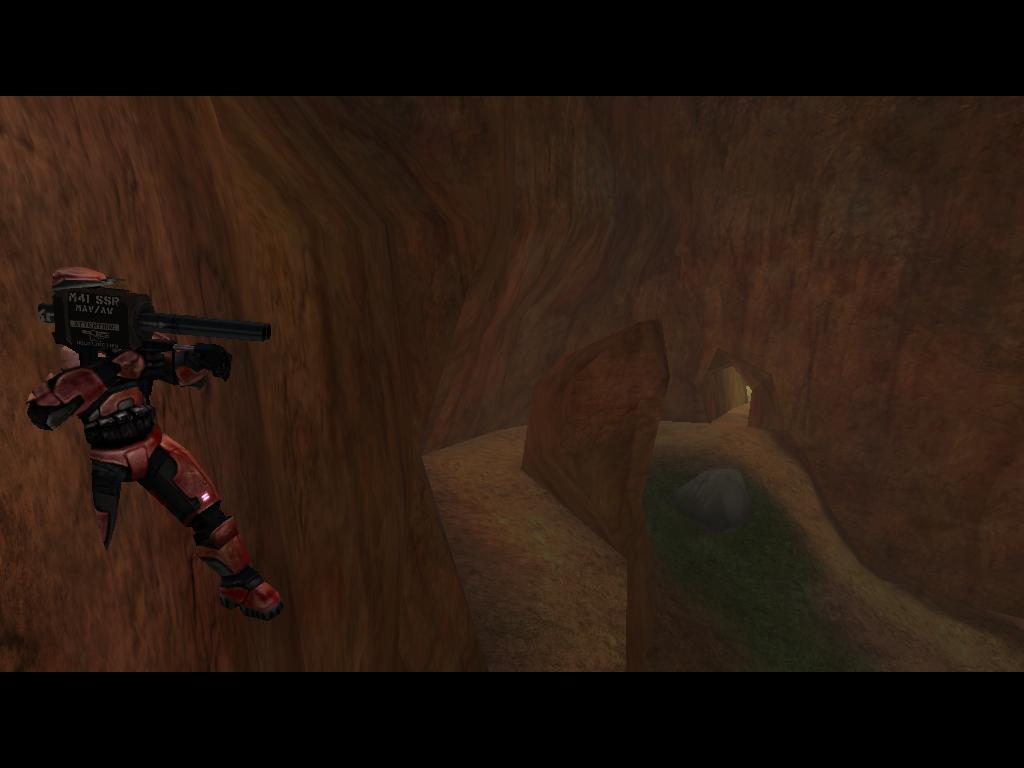
In the cases above we have particularly odd name "Blue Cave Ledge". Does this mean that the cave from which these ledges start is blue? Of course it doesn't, there aren't any "blue caves" in Halo. No, the blue here refers to what base the cave we start from is closest to, the word base has just been dropped to make the name shorter. This is also the case with "Red High", "Red Low", and "Blue Side". Red High and Red Low both refer to being on the Red Side of the cave. Viz., the side of the cave from which you can see Red Base. The high and the low refer to ending at higher or lower areas of the cliff wall. Blue Side refers to being on the side of the cave where you can see the Blue Base. Finally, the "Arch" designation implies an ending point inside of an Arch. So, in sum, all of these four specific names uniquely refer to an ending point. Thus we have a starting point for the general name and an ending point for the specific name, which should make the ledge fairly clear.
So, to bring this all together we have the following tenets for naming ledges:
1. If the ledge is on a map with vehicles (and thus vehicle bumping, which is where you bump yourself into a wall/out of the map using a vehicle) you group ledges based on their starting point.
2. Ledge names may be simplified to be made shorter, such as dropping the words "side" or "base".
3. Ledges that have been split into a general and specific names have the general name describing the starting point and the specific name describing the ending point.
VI. Naming Launches
Launches are named in a variety of ways, though as always minimalism is key. When naming launches specific names are often not necessary. As one might imagine, the general names describe the method used and/or the objects being launched. E.g.
PFRR Launch
Banshee PFR Launch
Team PFRT Launches
Tank-Shee (FW) Respawn Launch
Tank~MC (V)
It's important to note the lack of descriptive information in the first case. The name states it's a PFRR launch, but doesn't state what is being launched. In any situation in which this is the case assume it's the player performing the launch being launched. And since the PFRR launch is only possible with a Warthog, it stands to reason that the player is doing a PFRR while standing on a Hog.
The second case is actually a really poor example. It sounds like it's a launch that involves launching a Banshee using a PFR, but it is in fact a launch that involves using a Banshee to launch yourself. I'd say that out of all the sections of the movie the Explosion Launches section has the most ambiguous names. For this I apologize.
Moving on, we have Team PFRT Launches, which is fairly unambiguous. It's a launch that involves having a "team" of multiple players PFRT'ing something.
The fourth case is an example of a name for a Respawn Launch. This name follows the following template:
"[Static Vehicle]-[Vehicle Being Launched]-[Third object being launched] ([Position of static vehicle])"
The [Static Vehicle] is the vehicle you placed over the respawn point of the [Vehicle Being Launched]. The [Third object being launched] is only used when a player is being launched. The [Position of static vehicle] field describes how the Static Vehicle is positioned relative to the [Vehicle Being Launched]. E.g. is the static vehicle facing forward, backwards, diagonal? This field is only included if necessary, as it is a specific field.
The fifth case is an example of a name for a Warp Launch. These names follow a template that is extremely similar to the one used for Respawn Launches:
"[Force Source]~[Object Being Launched] ([Orientation of Object Being Launched])"
In some cases where the orientation of the object being launched doesn't change significantly but the launch being produced does we substitute [Orientation of Object Being Launched] with [Description of Launch], giving the following template:
"[Force Source]~[Object Being Launched] ([Description of Launch])"
The [Force Source] is either the vehicle that is warping so as to create the launch or "Plasma" in the case of Plasma Grenade warp launches. The [Object Being Launched] is the vehicle or player being launched by the force source. The [Orientation of Object Being Launched] is what direction the object being launched is facing relative to the force source, if it is relevant to the launch produced. The [Description of Launch] is a description of the behavior of the launch (horizontal, vertical, etc.) if the [Orientation of Object Being Launched] is not a suitable descriptor to differentiate between two different launches.
VII. Naming Locations
Locations are named without specific names as often as possible, with the general names often describing the location relative to other areas. E.g.
Ghost Platform (Behind Blue Base)
Cliff Left of Red Base
Cliff Behind Red Base
Hog at Sniper Point
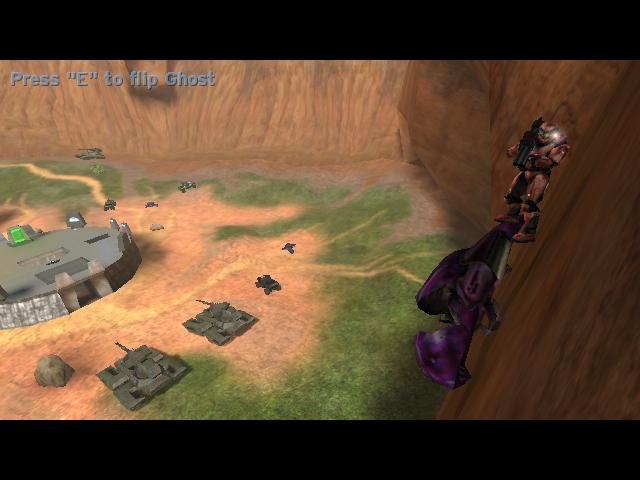
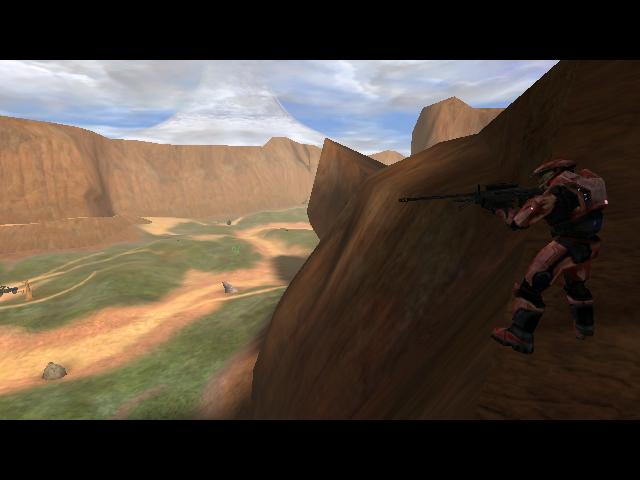
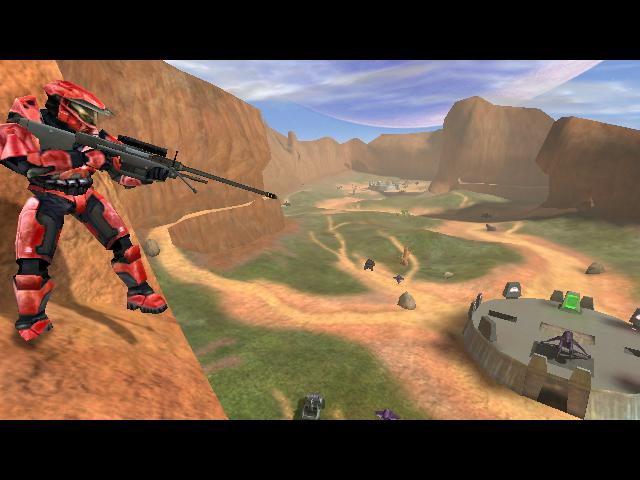
In this case we have one location with a special name, the sniper point, two that have been described relative to the Red Base on Blood Gulch, and one which defines a type of location that is possible in many places and thus requires a specific name.
VIII. Naming Miscellaneous Stunts
All miscellaneous stunts follow the binomial system with general names being nicknames - names developed by the community that relate to the stunt in question. E.g.
Remote Control Entry (Hog Side Seat)
Remote Control Banshee
Between the Caves Wall Walk
Hog Spin
No Weapons
As you can observe above, these names don't follow a specific template.
On the way to creating UST I felt compelled to come up with names for the stunts I found that did not have them. In Halo PC stunting there are a great many stunts that don't have names that have to be described to other stunters in order to be understood. I have always thought this to be silly, and have thus attempted to make an intuitive set of names which draws from biological classification to form something of a taxonomy - a naming system. Many stunters in Halo use at least some of these names today, and while some may seem strange on first look, I think you'll find they serve their purpose well. This may seem like overkill, but once you understand the huge volume of stunts in Halo 1, as is presented by this video, it should make sense to have such a carefully built system.
I should note, however, that this system is not perfect. There are situations in which, I feel, the templates provided don't provide adequately descriptive/intuitive names. In these cases I resorted to a nickname + specific name format. There are also certain stunts that are so well known by their nicknames, I refrained from providing a name generated by my system.
I. Binomial Nomenclature
Like biological classification I have adopted a sort of "Binomial Nomenclature". That is to say, every stunt name is usually built from two parts: a general name and a specific name.
The general name comes first, here is an example:
Hog Balance on Big Pillar
If there is only one way to balance a hog on the big pillar, this would be the name associated with that one stunt. However, if there are more ways then one to balance a hog on a big pillar, those ways would have to be noted so people could know which you were talking about. This leads to the second part of the name, the specific name which is placed in parenthesis.
The specific names for the general category presented above would lead to the following names:
Hog Balance on Big Pillar (Back)
Hog Balance on Big Pillar (RSU A)
Hog Balance on Big Pillar (RSU B)
Hog Balance on Big Pillar (Side)
Hog Balance on Big Pillar (UD A)
Hog Balance on Big Pillar (UD B)
Each of these 6 names represents an individual stunt. They are all hogs balancing on big pillars, but each one is on a different balance point. The balance point is noted in the parenthetical section of the name, and is the "specific" part of the name. All names follow this format:
General Name (Specific Name)
Just as a reminder, specific names are not always necessary. Sometimes a general name alone will suffice in describing a unique stunt. In these cases the specific section is omitted.
II. Naming Base Stunts
Base stunts have one of the most intuitive naming schemes. All one has to do to name a base stunt is ask a series of questions that allow for the construction of a descriptive name.
Let's say we have the following stunt:

The first thing we can observe about this stunt is it involves a Hog. This becomes the first part of the name: the stunt is a "Hog __ __".
We can then observe that the Hog is balancing, thus the stunt is a Balance. This becomes the second part of the name: the stunt is a "Hog Balance __ __".
We can then observe that this Hog is balancing on a particular part of the base. It's not on the small pillar or the portal:


Finally, we can observe that there are several ways we can balance a Hog on a Big Pillar. We could balance it on the pillar upside-down, right side up, facing the base, facing away from the base, on its back, on its gun, etc.






This leads to the final part of the name, the specific part. Thus for this stunt we have the name:
"Hog Balance on Big Pillar (UD A)"
This can be applied equally well to any vehicle balance on any part of the base by any balance point (with a few exceptions in which nicknames are used) through the following template-
"[Vehicle] Balance on [Object] ([Balance Point])"
A list of Balance points can be found in the terminology section.
This can be similarly extended to insides through three simple replacements-
Replace "Balance on" with "in"
Replace [Object] with [Geometry]
Replace [Balance Point] with [Break Point + state]
Thus we have the following template-
"[Vehicle] in [Geometry] ([Break Point + state])"
The [vehicle] section is identical in definition as it is with balances: it's just the name of the vehicle involved.
The [geometry] section is defined as the object/area the vehicle intersects. E.g. the Portal, the Small Pillar, the Big Pillar, etc. This section is over-ridden in certain situations when an object/area cannot be adequately described in an intuitive and clear fashion. This is often the case when the vehicle is inside of an area rather than object (e.g. the ceiling of the base, or the overhanging "slabs" found above the ramps).
The [break point + state] section is defined as both the way in which the vehicle clips/intersects with the object and the state the vehicle is in (is it upside down, right side up, balanced?). E.g. we can have:
"Ghost in Portal (Seat + Wing)"
"Ghost in Portal (Seat + Wing UD)"
and
"Ghost in Portal (Seat + Wing Balance)"



These are all Ghosts inside of the portal by the same two break points (the seat and the wing), however they have been adjusted through nontrivial methods to be in the portal in different states: right side up, upside down, and vertical (balanced).
You can find a list of break points in the terminology section.
III. Naming Balances
Balances are split into the two sub-types: "Floor Balances" and "Object Balances". Object balances are named in the same fashion as base stunt balances by the template "[Vehicle] Balance on [Object] ([Balance Point])". Below are some example names of object balances-
Hog Balance on Big Rock (Middle)
Hog Balance on Small Rock (Gun)
Hog Balance on Small Rock (Middle)
Hog Balance on Tree



These are all of the same form as the naming for balances on the base. The only notable item in this listing is a balance that lacks a specific name due to there being only one permutation (one balance point) for the vehicle balancing on that particular object. In this case you can only balance a Hog on a tree in one way. If at a later date an additional way was discovered this name would have to be modified to include a specific name.
Floor balances are a different story. Because they aren't specific to an object or area, one can simplify their name by removing the "[Object]" field. This leaves "[Vehicle] Balance ([Balance Point])". We could use this sort of name for floor balances, but one might recognise that it is awfully similar to the format for Object Balances, and thus might be confusing. This leads to a slightly altered naming structure of the form "[Vehicle] [Balance Point] Balance". Below are some example names of floor balances-
Hog Nose Balance
Ghost Nose Balance
Tank Back Balance



You can find a list of balance points in the terminology section.
IV. Naming Insides
Insides are split into two sub-types: "Actor/Player Insides" and "Vehicle Insides". Actor/player involve getting a player, or other actor if you're playing campaign, inside of an enclosed object. This object could be a rock, a tree, a pillar, or a vehicle. Below are some example names of Actor/player insides-
Inside Tank Back Balance (Top Tread)
Inside Hog (Hood)
Inside Small Pillar
Inside Rock (Noob Rock)



This format is realized by noting you are getting yourself inside of an object (or in some cases, objects), sometimes in a particular area of that object. Thus we derive the template-
"Inside [Object/s] ([Area])"
In some cases the "[Area]" field is replaced by a "[Specific Object]" field. This usually occurs with insides that are very similar (like getting inside various rocks or trees). This gives the following template which is usually only seen with rock/tree insides:
"Inside [Object/s] ([Specific Object])"
Vehicle insides are named in a format identical to the one used for vehicle inside base stunts, as presented below:
"[Vehicle] inside [Object] ([Break point + state])"
Here are some example names of vehicle insides:
Ghost Froom (Red Base)
Tank in Tree
Ghost in Rock
Ghost in Tree (Blue Base Tree)



There aren't very many vehicle inside that aren't around a base on Blood Gulch, and some of the ones that are were improperly categorized at the time when I was making the movie into base stunts (Full Ghost Sharks and Full Ghost Shrooms).
V. Naming Ledges
Below I will give examples of the names assigned to ledges and an explanation as to how and why I name ledges in this way. To start I will give some examples of general names.
Ledge Between the Caves
Blue Cave Ledge
Ledge Behind Blue Base
In the first two names on this list above we have sequences of ledges you can follow in a wall/ceiling which can all be started from the same location/bump, but which all end in different places. These ledges have been grouped into general names based on the starting point. In the third case we have a handful of ledges which take place behind blue base with slightly different starting points. These ledges have all been grouped into one general name because they all start from the same general area. On smaller maps where telebumping or shield bumping is necessary to get outside of the map's geometry most ledges are given unique names based on the ending point reached, rather than being given general names based on their starting point.
Blue Cave Ledge (Blue Side)
Blue Cave Ledge (Arch)
Blue Cave Ledge (Red High)
Blue Cave Ledge (Red Low)



In the cases above we have particularly odd name "Blue Cave Ledge". Does this mean that the cave from which these ledges start is blue? Of course it doesn't, there aren't any "blue caves" in Halo. No, the blue here refers to what base the cave we start from is closest to, the word base has just been dropped to make the name shorter. This is also the case with "Red High", "Red Low", and "Blue Side". Red High and Red Low both refer to being on the Red Side of the cave. Viz., the side of the cave from which you can see Red Base. The high and the low refer to ending at higher or lower areas of the cliff wall. Blue Side refers to being on the side of the cave where you can see the Blue Base. Finally, the "Arch" designation implies an ending point inside of an Arch. So, in sum, all of these four specific names uniquely refer to an ending point. Thus we have a starting point for the general name and an ending point for the specific name, which should make the ledge fairly clear.
So, to bring this all together we have the following tenets for naming ledges:
1. If the ledge is on a map with vehicles (and thus vehicle bumping, which is where you bump yourself into a wall/out of the map using a vehicle) you group ledges based on their starting point.
2. Ledge names may be simplified to be made shorter, such as dropping the words "side" or "base".
3. Ledges that have been split into a general and specific names have the general name describing the starting point and the specific name describing the ending point.
VI. Naming Launches
Launches are named in a variety of ways, though as always minimalism is key. When naming launches specific names are often not necessary. As one might imagine, the general names describe the method used and/or the objects being launched. E.g.
PFRR Launch
Banshee PFR Launch
Team PFRT Launches
Tank-Shee (FW) Respawn Launch
Tank~MC (V)
It's important to note the lack of descriptive information in the first case. The name states it's a PFRR launch, but doesn't state what is being launched. In any situation in which this is the case assume it's the player performing the launch being launched. And since the PFRR launch is only possible with a Warthog, it stands to reason that the player is doing a PFRR while standing on a Hog.
The second case is actually a really poor example. It sounds like it's a launch that involves launching a Banshee using a PFR, but it is in fact a launch that involves using a Banshee to launch yourself. I'd say that out of all the sections of the movie the Explosion Launches section has the most ambiguous names. For this I apologize.
Moving on, we have Team PFRT Launches, which is fairly unambiguous. It's a launch that involves having a "team" of multiple players PFRT'ing something.
The fourth case is an example of a name for a Respawn Launch. This name follows the following template:
"[Static Vehicle]-[Vehicle Being Launched]-[Third object being launched] ([Position of static vehicle])"
The [Static Vehicle] is the vehicle you placed over the respawn point of the [Vehicle Being Launched]. The [Third object being launched] is only used when a player is being launched. The [Position of static vehicle] field describes how the Static Vehicle is positioned relative to the [Vehicle Being Launched]. E.g. is the static vehicle facing forward, backwards, diagonal? This field is only included if necessary, as it is a specific field.
The fifth case is an example of a name for a Warp Launch. These names follow a template that is extremely similar to the one used for Respawn Launches:
"[Force Source]~[Object Being Launched] ([Orientation of Object Being Launched])"
In some cases where the orientation of the object being launched doesn't change significantly but the launch being produced does we substitute [Orientation of Object Being Launched] with [Description of Launch], giving the following template:
"[Force Source]~[Object Being Launched] ([Description of Launch])"
The [Force Source] is either the vehicle that is warping so as to create the launch or "Plasma" in the case of Plasma Grenade warp launches. The [Object Being Launched] is the vehicle or player being launched by the force source. The [Orientation of Object Being Launched] is what direction the object being launched is facing relative to the force source, if it is relevant to the launch produced. The [Description of Launch] is a description of the behavior of the launch (horizontal, vertical, etc.) if the [Orientation of Object Being Launched] is not a suitable descriptor to differentiate between two different launches.
VII. Naming Locations
Locations are named without specific names as often as possible, with the general names often describing the location relative to other areas. E.g.
Ghost Platform (Behind Blue Base)
Cliff Left of Red Base
Cliff Behind Red Base
Hog at Sniper Point



In this case we have one location with a special name, the sniper point, two that have been described relative to the Red Base on Blood Gulch, and one which defines a type of location that is possible in many places and thus requires a specific name.
VIII. Naming Miscellaneous Stunts
All miscellaneous stunts follow the binomial system with general names being nicknames - names developed by the community that relate to the stunt in question. E.g.
Remote Control Entry (Hog Side Seat)
Remote Control Banshee
Between the Caves Wall Walk
Hog Spin
No Weapons
As you can observe above, these names don't follow a specific template.